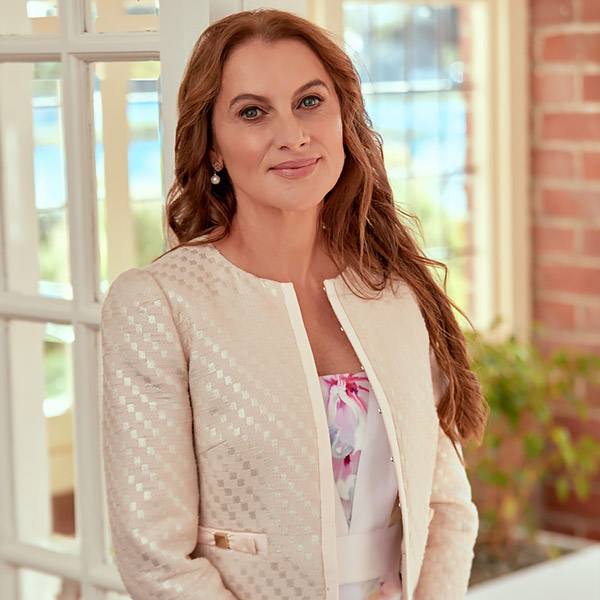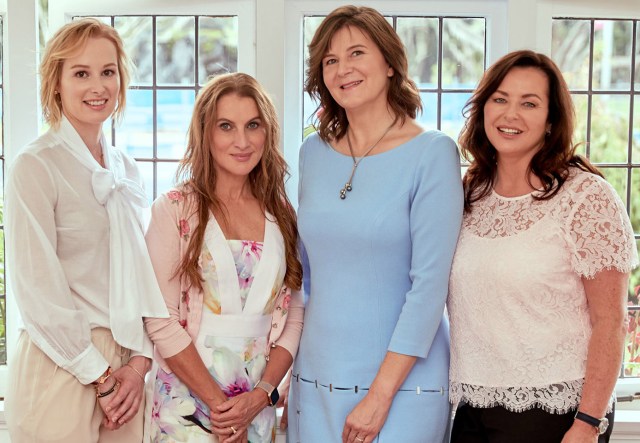A day in the life of Clinic 42’s Dr Lynn Theron

Clinic 42 is one of New Zealand’s most trusted cosmetic medicine clinics, evident in its devout client base and highly sought-after waitlist. Co-founder Dr Lynn Theron is a multi-tasking maven, dividing her day and nights between Clinic 42 and Auckland Hospital’s emergency department.
In this industry profile, Dr Theron speaks to ProCollective about turning her passion into a business, the biggest shifts she’s observed in the industry, and the key to Clinic 42’s success.
ProCollective (PC): You’ve been practicing appearance medicine since 1999, but you’re not just in the business of beauty – what does a typical week entail for you?
Dr Lynn Theron: Saving faces by day, saving lives by night! No day or night is ever alike. I spend part of the week in the busy emergency department at Auckland Hospital as an emergency medicine specialist surrounded by chaos, noise, and everything all at once. I couldn’t do this without the dedicated, patient-focused team I work with.
The rest of the week I am at my other home, Clinic 42, a juxtaposition to the ED with its tranquil environment and fixed schedule. Many of my clients have been with me for years.
Then there’s training other professionals in cosmetic medicine – it’s such a thrill to see our skills shared.
PC: What inspired your career in appearance medicine? Talk us through your journey from study to Clinic 42.
Dr Lynn Theron: I was on a great travelling adventure and was stunned with New Zealand, the country, and the people. My pioneering spirit drew me to emergency medicine, but I was also fascinated by skin. One of my Clinic 42 partners Joanna Romanowska introduced me to appearance medicine. Caci clinic offered me a position and I relished the opportunity. I became an evangelist for appearance medicine and I still am.

PC: What is your approach to cosmetic medicine?
Dr Lynn Theron: My signature style is remaining you, looking refreshed, happy, and healthy. It’s about long-lasting, subtle enhancement. Not forever young, but forever you. Cosmetic medicine designed specifically for you, that’s the Clinic 42 approach. We combine techniques, modalities, and products that we have acquired and developed over two decades to carry out personalised treatments. Also, safety first – I don’t perform some procedures as they’re too risky.
PC: What are you most passionate about in your role/s?
Dr Lynn Theron: Making a positive difference with every patient I encounter.
PC: Throughout your career, what have been some of your most memorable moments?
I recall the first time I saw a volumising dermal filler virtually create a face lift with a syringe. The person looked in the mirror and was overwhelmed with emotion. She started crying with joy. There have been a lot of moments like that since.
PC: What are some of the biggest changes you’ve noticed in the cosmetic medicine landscape throughout your career?
Dr Lynn Theron: Have we got that much time…How to summarise 20 years of fast innovation?!
Firstly, the name changed from ‘appearance medicine’ to ‘cosmetic medicine’, in line with international trends.
Initially tox could only be performed by plastic surgeons. Then it was GP’s, then nurses, dentists and soon paramedics. It is a registered medication, so it requires a prescription and oversight by a physician. On the other hand, dermal fillers were originally a medication but transitioned to ‘medical device’, so no physician oversight is required despite having the most serious risks.
New tox types and fillers are being created all the time. Hyaluronic acid (HA), a skin building block, largely replaced collagen (from a foreskin) about 20 years ago. It was initially made from a coxcomb (rooster) then in the lab. These products vary in how they are made, so some are firmer, some softer. That gives me a whole set of artistry tools to replace what has been lost in the ageing face or to beautify a younger face.
Tech has created an abundance of light, radio, and ultrasound treatments to fix photo damage ageing of the skin and skin laxity, do hair removal and now even vaginal rejuvenation and lubrication.
Biostimulation of the skin started with platelet-rich plasma (your own platelets that we remove from you with a syringe and then reinject into you) and developed into products such as Radiesse and Sculptra.
Cosmetic medicine has been moving away from high-end clinics to the chain-based tox box at the mall and pharmacy. Covid has also seen a shift to working from home and a growth in home-based practice. With social media, practitioners can communicate directly with followers and organise appointments.
Finally, perception – cosmetic medicine and surgery used to a taboo subject but when I mention tox now, nobody raises an eyebrow (tox jokes never get old…)
What are some of the key trends you’re observing currently in the field of cosmetic medicine?
Dr Lynn Theron: Biostimulators (Radiesse, Sculptra) and bioremodellers ( Profhilo ) are growing fast. They increase skin building blocks like collagen, elastin and even stem cells. This is like long-term investing, except it’s in your skin. The improvements may initially be subtle for some products but two years later, you’ll be happy you made the investment as the skin will be firmer, healthier, and lifted.
Multiple modality treatments are rising fast, such as combining skin-resurfacing using radiofrequency (nanofrac) or laser with biostimulators in close succession to achieve greater results. In some places these are all performed on the same day.
Then there is micro botulinum toxin, small dose toxin spread superficially across wrinkled areas.
Gender-neutral treatments are also set to be a big trend this year too.
PC: Do you have a favourite treatment right now?
Dr Lynn Theron: That would be Profhilo – a bioremodelling agent. it’s a new type of hyaluronic acid that is injected superficially into 10 areas in the face and neck. It then stimulates your skin to create collagen, elastin, and adipocyte stem cells. You literally grow new skin and it’s safe. It’s like “Botox” was to cosmetic medicine in the 90’s. We were fortunate enough to be one of the first clinics in New Zealand to use Profhilo prior to its launch in Australia this year. The results speak for themselves with clients returning for more treatments. Profhilo can now be injected into the skin in other body areas. It comes in a bigger syringe for those batty, crepe-like arms and bumpy lumpy abdominal skin.
PC: What has the journey been like navigating the challenges of the past few years? Any key learnings?
Dr Lynn Theron: Interesting question. Initially, in the first lockdown cosmetic medicine clinics were closed. Everybody got old! Our multi-talented staff were redeployed to ICU, accident and medical clinics, screening facilities, public health, and emergency medicine front line. We were fortunate to have the skills to help New Zealand during that time
During the second lockdown, a select advisory group, of which I was a member, created a guideline for safe practice of cosmetic medicine in Covid environments. This was presented to the Ministry of Health. With subsequent lockdowns, cosmetic physicians and their staff were able to operate under these strict conditions. We constantly felt that we were playing catch up as the usual treatment sequence was lost.
Staff absences and patient illness were an everyday occurrence, which was frustrating and tiring for all. Initially, wearing N95 masks, glasses and a full-face shield was exhausting to the staff and a visual challenge when performing fillers. Being able to see shadows and finer details is crucial in dermal filling injecting.
On the more positive side, it created an opportunity for seemingly endless cosmetic medicine updates and online conferences, a lot of extra knowledge and expert input. We found a new tox syringe as our regular syringes were not available. The new syringe has such a small needle it’s virtually painless. How’s that for a silver lining?
PC: What do you think has been the key to Clinic 42’s success in an increasingly competitive market?
Dr Lynn Theron: Those good old-fashioned values of honesty, trust, loyalty, hard work, as well as a commitment to excellence, curiosity to improve and our dynamic team. Beyond that, the big three words: competence, competence, competence. We have a strong focus on safety.
PC: We’re always eager to peek inside the beauty bag of a pro. Talk us through your current skincare routine.
Dr Lynn Theron: I walk the talk and only use products we recommend at Clinic 42. I start by cleansing my skin with either ZO Gentle Cleanser or Synergie Ultracleanse, which is especially important after a shift in ED. This is followed by ZO Complexion Renewal Pads to remove any residual build-up. Mornings I apply ZO Daily Defence and Emepelle serum (Oestrogen receptor binding cream for premenopausal persons). Nights are ZO Growth Factor Serum, followed by either ZO Advanced Radical Night Repair twice weekly or Environ Revival Masque. As needed, I’ll use the ZO Hydrating cream or pure HA during the day.
Want more ProCollective?
- For more news and updates, subscribe to our weekly newsletter
- Follow us on Instagram
- Like us on Facebook
